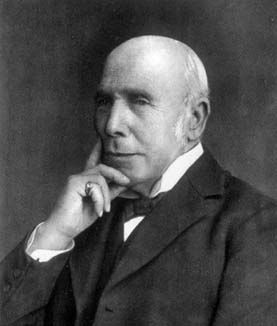Thomas Muir (mathematician) facts for kids
Sir Thomas Muir (born August 25, 1844 – died March 21, 1934) was a Scottish mathematician. He was very famous for his knowledge of determinants, which are special numbers used in advanced math to help solve problems. He also received several important honors for his work, like being made a Companion of the Order of St Michael and St George (CMG) and a Fellow of the Royal Society (FRS).
Contents
Sir Thomas Muir's Life
Thomas Muir was born in Stonebyres in South Lanarkshire, Scotland. He grew up in the small town of Biggar. He went to school at Wishaw Public School.
University Studies and Early Career
At the University of Glasgow, he first studied classics. However, after getting advice from the famous scientist who would later become Lord Kelvin, he changed his studies to mathematics. After finishing university, he worked at the University of St Andrews and then at the University of Glasgow. From 1874 to 1892, he taught at Glasgow High School.
During this time, he wrote important books about determinants. In 1882, he published Treatise on the theory of determinants. Then, in 1890, he published a History of determinants.
Awards and Recognition
In 1874, Thomas Muir became a Fellow of the Royal Society of Edinburgh. This is a special group for important scientists and thinkers. Famous people like William Thomson, Lord Kelvin, helped him become a member. He won the Society's Keith Prize twice, first for 1881-1883 and again for 1895–1897. He also served as the Society's Vice President from 1888 to 1891. Later, he won the Gunning Victoria Jubilee Prize for 1912 to 1916.
Work in South Africa
From 1892 to 1915, Sir Thomas Muir moved to South Africa. There, he became the Superintendent General of Education. This meant he was in charge of all the schools. He also worked at the University of the Cape. In 1900, he was elected a Fellow of the Royal Society, which is another very important scientific group.
In 1901, he was made a Companion of the Order of St Michael and St George (CMG). This is a special award from the King. In 1915, King George V gave him the title of 'Sir' in the 1915 Birthday Honours, making him Sir Thomas Muir.
Shortly after he arrived in South Africa, a school called Uitenhage Public School was renamed the Muir Academy. This school later became Muir College. It is now thought to be the oldest secondary school in South Africa. Sir Thomas Muir believed that schools should teach practical skills like woodworking and needlework. He also thought it was very important to teach mathematics, science, and nature study. He greatly improved how teachers were trained. When he first arrived, there was only one college for training teachers. By the time he retired 23 years later, there were twelve!
Later Works and Death
From 1906 onwards, he continued to write about the history of determinants. He published a five-volume series, with the last part coming out in 1929. This series covered the theory of determinants up to 1920. He published another book in 1930.
Sir Thomas Muir died on March 21, 1934, in Rondebosch in South Africa.
Sir Thomas Muir's Family
In 1876, Sir Thomas Muir married Margaret Bell. Their grandson was a well-known geophysicist named Athelstan Spilhaus.
Books by Sir Thomas Muir
- The Theory of the Determinant in the Historical Order of Development. 4 volumes. New York: Dover Publications 1960
- A Treatise on the Theory of Determinants. Revised and Enlarged by William H. Metzler. New York: Dover Publications 1960
- "A Second Budget of Exercises on Determinants", American Mathematical Monthly, Vol. 31, No. 6. (June, 1924), pages 264–274
- "Note on the Transformation of a Determinant into any Other Equivalent Determinant", The Analyst, Vol. 10, No. 1. (Jan 1883), pages 8–9
- A History of Determinants (1929)


